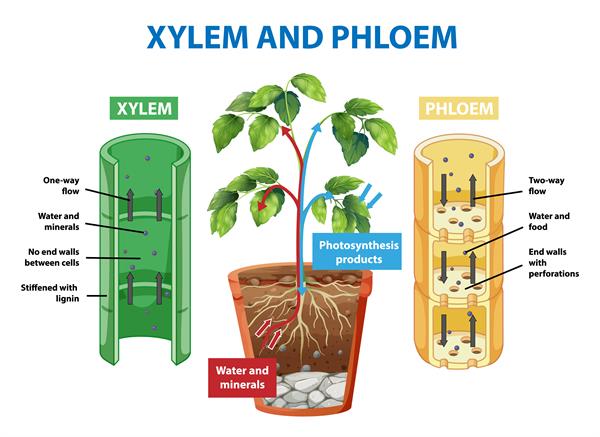PDF chapter test TRY NOW
We have already looked at how plants take in essential nutrients like CO2 and store photosynthetic energy in their chlorophyll-containing organs, such as leaves. However, other types of raw materials required to construct plant bodies will have to be procured individually.
All other raw materials, such as nitrogen and phosphorus, should be extracted separately from the soil, the closest and most abundant nutrient source. These compounds are absorbed by the roots and transported to the leaves and other plant sections for essential functions, including photosynthesis and cellular respiration.
But have you ever thought about how these compounds make their way from the roots to their final destination? Let us see how.
All other raw materials, such as nitrogen and phosphorus, should be extracted separately from the soil, the closest and most abundant nutrient source. These compounds are absorbed by the roots and transported to the leaves and other plant sections for essential functions, including photosynthesis and cellular respiration.
But have you ever thought about how these compounds make their way from the roots to their final destination? Let us see how.
What is transportation?
The process involving the movement of water and nutrients throughout the plant for its survival is known as transportation.
Transportation in plants:
Similar to animals, transportation is a vital process in plants. However, unlike animals, plants lack interstitial fluid and a circulatory system to transport nutrients. But still, we can observe that there is the movement of various substances not only to short distances but also to very long distances (from roots to chlorophyll-containing leaves).

Transportation in plants by vascular tissues
Significance of transport system in plants:
When the distance between the roots (soil-contacting organs) and leaves (chlorophyll-containing organs) is small, the energy and the raw materials are transported through diffusion and active transport supplemented by cytoplasmic streaming.
When these distances are high, and due to the changes in the plant body design (trees), diffusion is not enough to transport the substances. Hence a proper transport system is required.
Energy and transportation:
As we know the needs of energy vary between different body designs. Unlike animals plants do not move and their bodies have a large proportion of dead cells in various tissues. Hence, comparatively they have low energy needs, and can use relatively slow transport systems.
Reference:
https://www.freepik.com/free-vector/diagram-showing-xylem-phloem-plant_13225464.htm?query=transportation%20in%20plants
